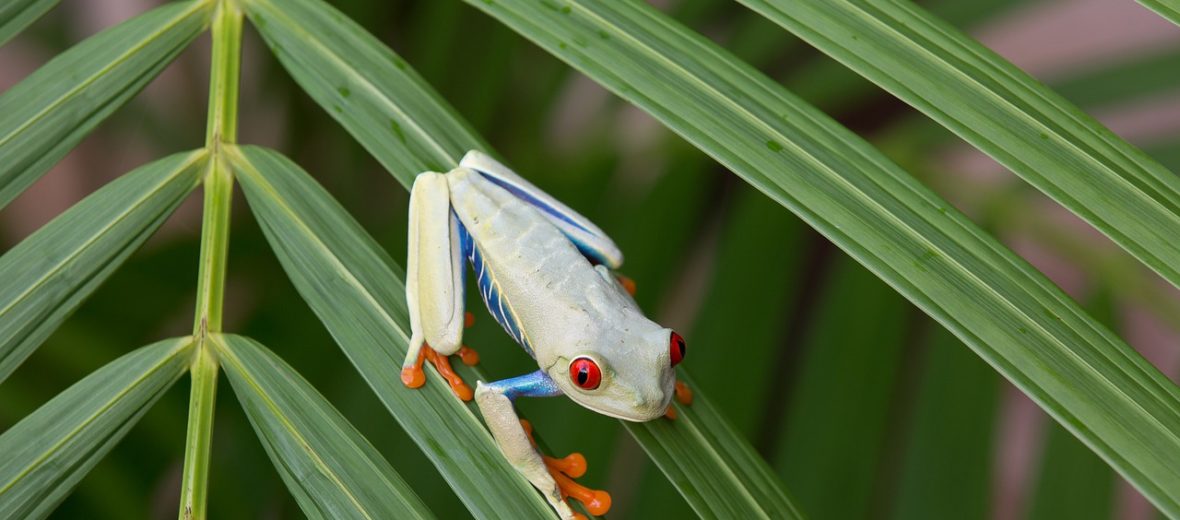
The title of the most striking amphibians, in my humble opinion, goes to the red-eyed treefrog! With huge red eyes, multiple colors that consist of green, yellow, cream, blue, orange, and a white belly this frog has all the pretty a person can handle. I have personally cared for these gorgeous frogs and loved everything from their colors to their calls. They would even reciprocate calls, if you got even close to imitating them. The IUCN lists these frogs as Least Concern.
First the Stats…
Scientific Name: Agalychnis callidryas
Length: Up to 2.75 in
Lifespan: Up to 15 years
Now on to the Facts!
1.) Red eyed treefrogs spend most of their time in tall shrubs and smaller trees nearing streams, ponds, and pools of water.
2.) When marking territory, males will shake their perch violently. The vibrations tell other males that the area has already been reserved.
3.) Even though red eyed treefrogs have intense coloration on their body, red-eyed treefrogs are not poisonous like other brightly-colored species of frogs and salamanders.
4.) When sleeping, the red eyed tree frog uses a transparent “eyelid” or membrane that covers the eyes which allows them to detect movement, via shadows, and still allows them to sleep and protect their eyes. This eyelid is called a nictitating membrane.
Did you know…?
The red eyed treefrog is sexually dimorphic? The males, as in most frogs and toads, are much smaller than the females. This is because the female has to carry the male on her back during mating or amplexus.
5.) Red-eyed treefrogs have sticky pads on their toes, which allows them to stick to branches and leaves.
But wait, there’s more on the red eyed treefrog!
6.) These treefrogs inhabit areas near rivers and ponds in rainforests and humid lowlands on the Atlantic slopes from southern Veracruz and northern Oaxaca in Mexico, to central Panama and northern Colombia.
7.) Like other frogs and toads, these treefrogs use their eyeballs to help swallow food!
Did you know…?
The red eyed treefrog is sexually dimorphic? The males, as in most frogs and toads, are much smaller than the females. This is because the female has to carry the male on her back during mating or amplexus.
8.) These beautiful frogs are nocturnal (active at night).
9.) When the tadpoles of the red eyed treefrog are ready to emerge, they drop from the undersides of the leaves they are stuck to and drop into the water. They do this prematurely in an effort to avoid predators that would look for and eat the eggs.
10.) Natural enemies of adult red-eyed treefrogs are snakes, spiders, bats, owls, and toucans. Tadpoles are targeted by dragonflies, fish and water beetles.
Now a Short Red Eyed Treefrog Video!
Want to suggest a critter for me to write about? Let me know here.




Leave a Reply